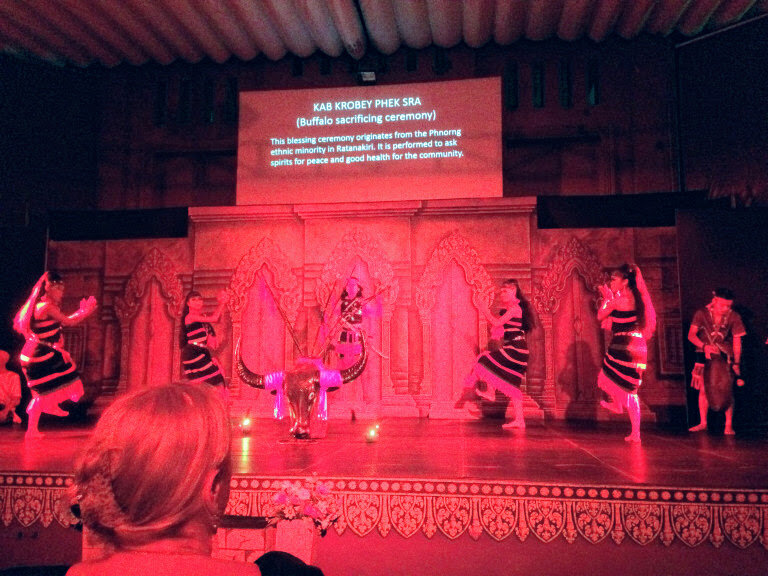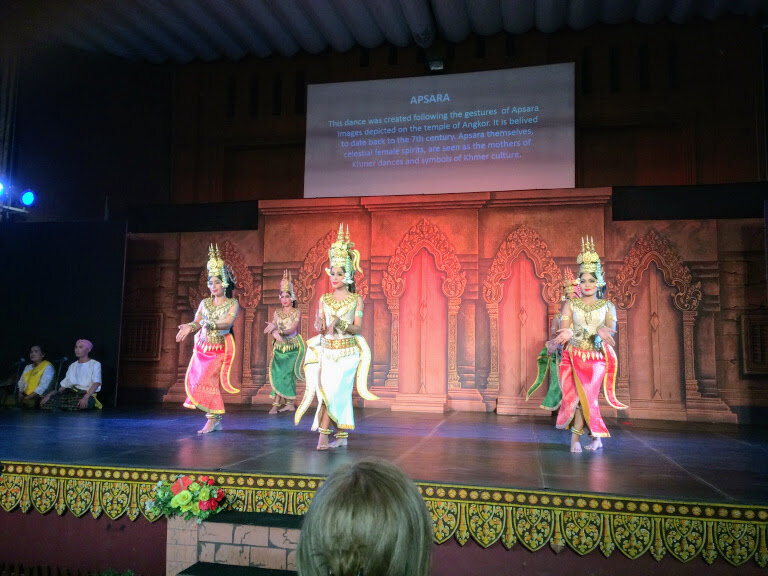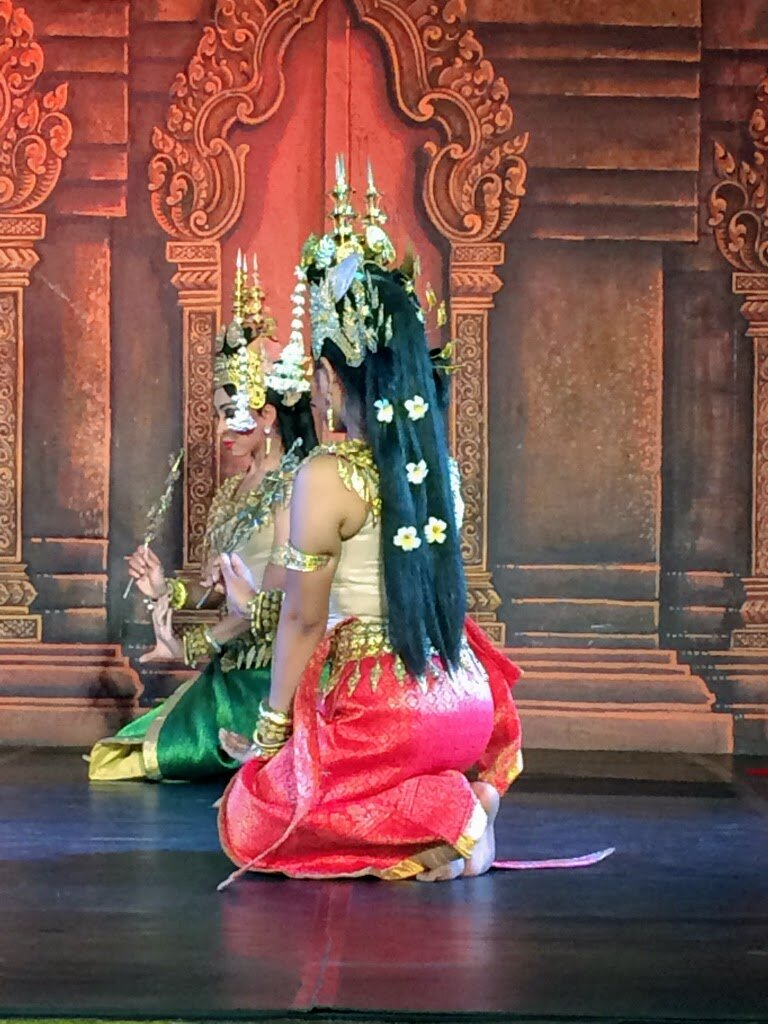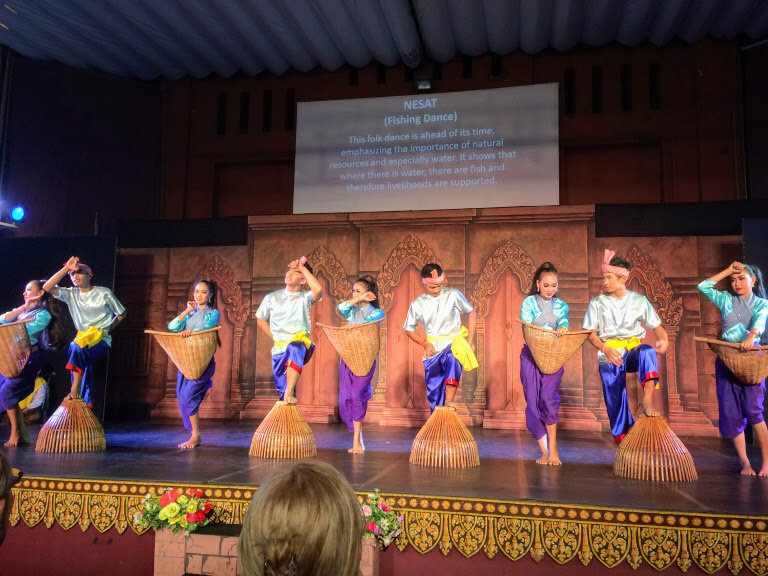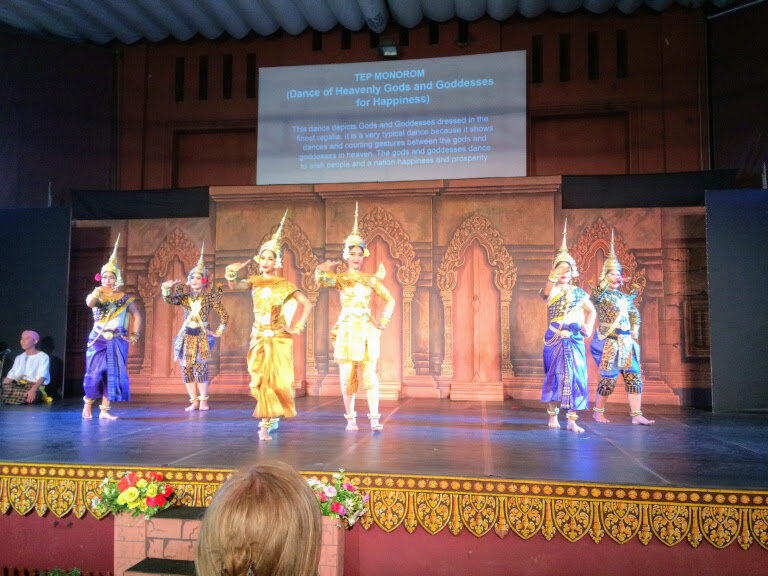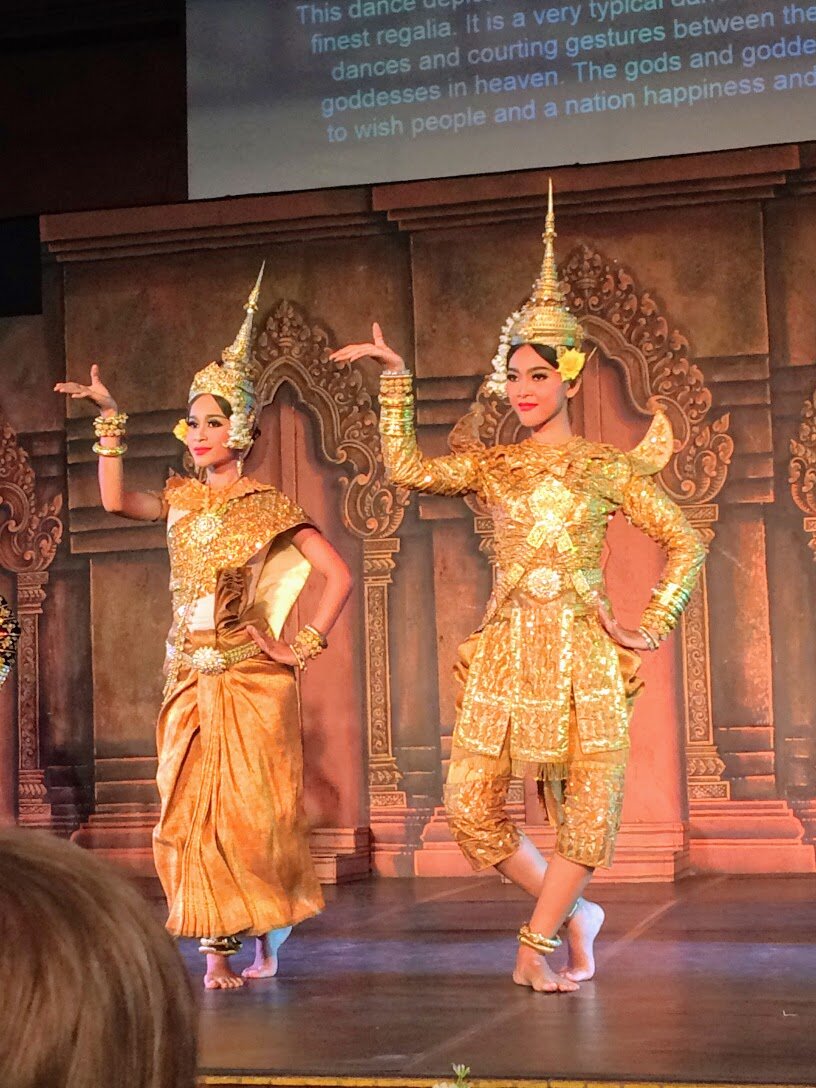Cambodia: Living Arts
A few of us went to the Cambodian Living Arts show at the Cambodian National Museum, and it was spectacular! Proceeds from the show go to support education in Khmer dance, music, puppetry, and art throughout Cambodia. In a little over an hour, viewers are treated to Apsara (nymph) dance which was performed in the courts of the Angkor Empire, as well as dances from the ethnic minorities in the provinces. After the Khmer Rouge murdered many Royal Ballet dancers, the intricate and precise movements of this style and dance were recreated from carvings at Angkor Wat!
The show opened with the Kab Krobey Phek Sra or Buffalo Sacrificing Ceremony. The blessing ceremony is from the Phnorn ethnic minority in Ratanakiri. The dance has an ominous beat performed by a band with a set of steel drums and symbols. Khmer culture is a synergy of Buddhism, Hinduism, and animism. Many events like weddings and the groundbreaking of buildings are moments when the spirits that inhabit the spaces, objects, or animals must be placated to prevent the mischievous spirits from wreaking havoc or causing bad luck. This dance is performed to ask spirits for peace and good health for the community.
Next was Apsara dance, and I felt hypnotized. The movements are so precise, and the dancers move with their entire body including the head, eyes, fingers and toes. The dance is believed to date back to the 7th century! Apsara are celestial female spirits, and are seen as the mothers of Khmer dances and symbols of Khmer culture.
Below is an image of the peacock dance. Peacocks are symbols of happiness and this dance from the Mondulkiri province mimics two peacocks courting.
The Nesat dance, or fishing dance, is ‘ahead of its time’ and emphasizes the importance of natural resources and especially water. It shows that where there is water, there are fish and therefore livelihoods are supported. I was pretty uncomfortable toward the end of this dance because it acts out adolescent flirting for a solid five minutes. Like, middle-school-style ‘I steal your basket, and then I give you a flower to make it up to you’ type of flirting, but for some reason in a dance?
The Tep Monorom, Dance of Heavenly Gods and Goddesses for Happiness, depicts gods and goddesses dressed in their finest regalia. It is a typical dance because it shows courting gestures between the gods and goddesses in heaven as they dance to wish people happiness and prosperity. The dancer on the right side of the center pair was probably the most coordinated human being I’ve ever seen. She moved her head and eyes with such precision. The way that their facial expressions stayed so fixed while their heads and eyes moved was both haunting and magical.
Phloy Suoy is a dance that originates from the Suoy ethnic group from the Oral Moutnain Range in the Kompong Speu Province. The Suoy perform this dance in dedication to the cave spirit, as well as other gods who protect their community.

